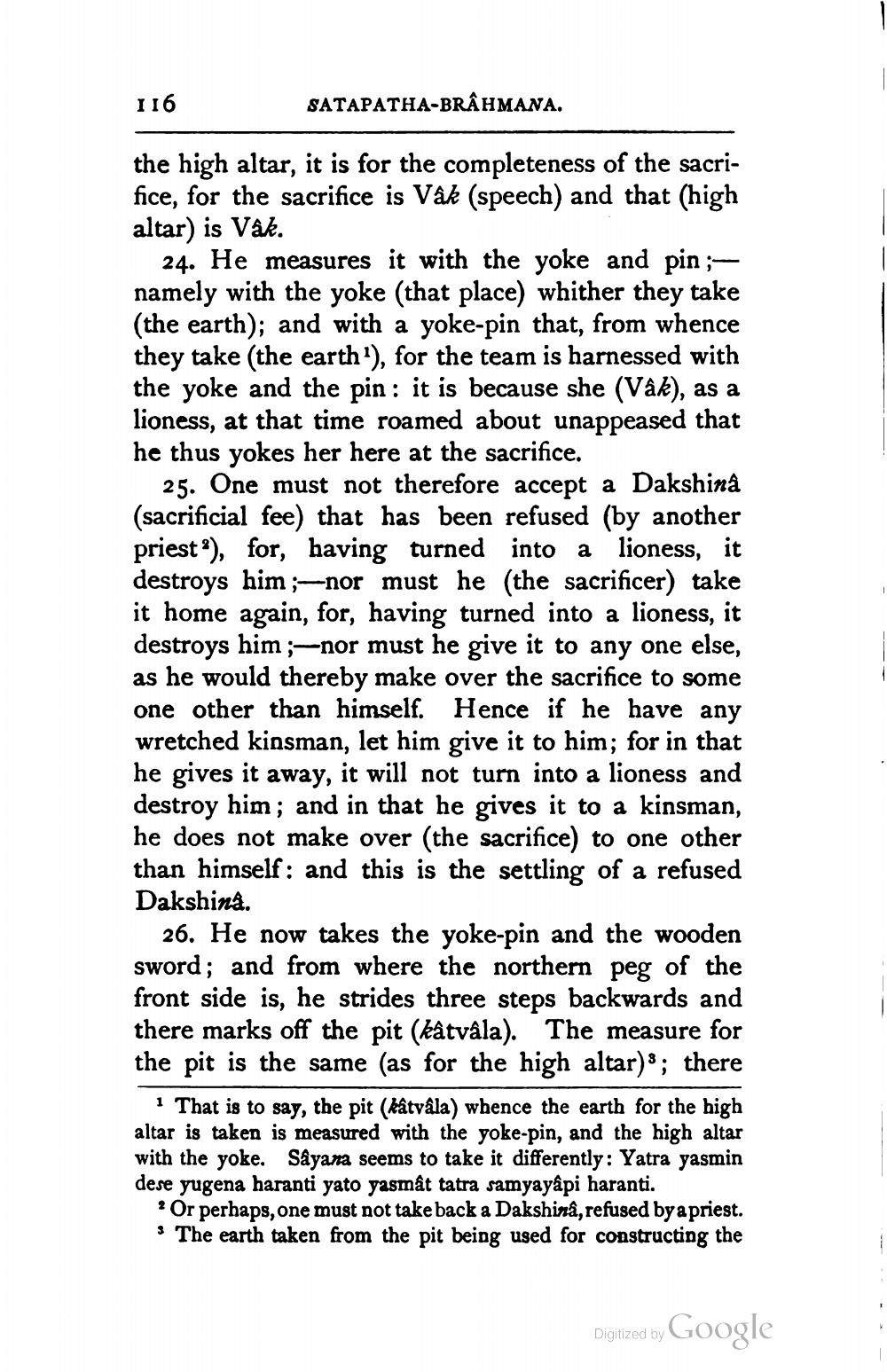________________
116
SATAPATHA-BRÂHMANA.
the high altar, it is for the completeness of the sacrifice, for the sacrifice is Vâk (speech) and that (high altar) is Vak.
24. He measures it with the yoke and pin ;namely with the yoke (that place) whither they take (the earth); and with a yoke-pin that, from whence they take (the earth), for the team is harnessed with the yoke and the pin : it is because she (Vâk), as a lioness, at that time roamed about unappeased that he thus yokes her here at the sacrifice.
25. One must not therefore accept a Dakshina (sacrificial fee) that has been refused (by another priesta), for, having turned into a lioness, it destroys him ;-nor must he (the sacrificer) take it home again, for, having turned into a lioness, it destroys him ;-nor must he give it to any one else, as he would thereby make over the sacrifice to some one other than himself. Hence if he have any wretched kinsman, let him give it to him; for in that he gives it away, it will not turn into a lioness and destroy him; and in that he gives it to a kinsman, he does not make over the sacrifice) to one other than himself: and this is the settling of a refused Dakshina.
26. He now takes the yoke-pin and the wooden sword; and from where the northern peg of the front side is, he strides three steps backwards and there marks off the pit (katvala). The measure for the pit is the same (as for the high altar) ; there
That is to say, the pit (kâtvåla) whence the earth for the high altar is taken is measured with the yoke-pin, and the high altar with the yoke. Sâyana seems to take it differently: Yatra yasmin dese yugena haranti yato yasmât tatra samyayâpi haranti.
? Or perhaps, one must not take back a Dakshinâ, refused by a priest. * The earth taken from the pit being used for constructing the
Digitized by Google




